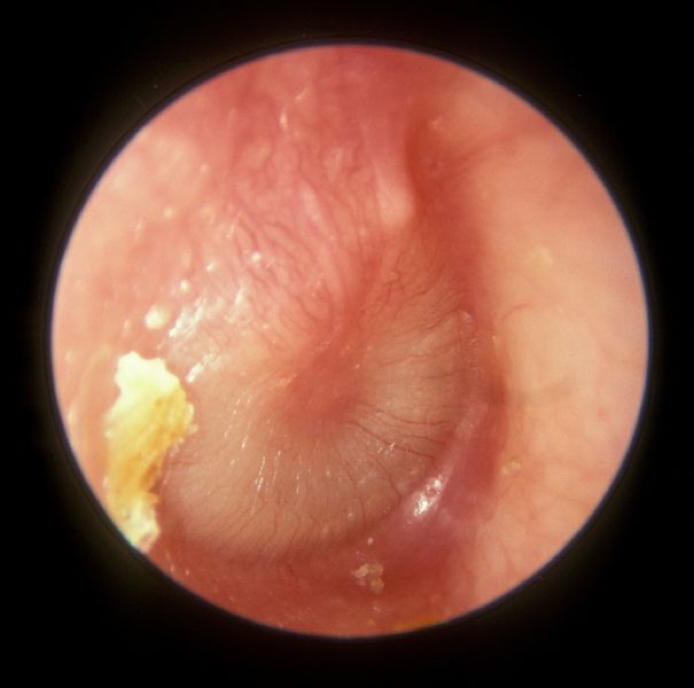Table of Contents
Overview – Acute Otitis Media (AOM)
Acute Otitis Media (AOM) is a common paediatric infection involving inflammation and infection of the middle ear, usually following upper respiratory tract infections. It is most prevalent in children under six years old and often presents with fever, otalgia, and hearing loss. Prompt recognition and treatment are essential to prevent complications such as mastoiditis and chronic suppurative otitis media. This article outlines the causes, clinical features, and evidence-based management of AOM for final-year medical students and junior doctors.
Definition
Acute Otitis Media (AOM) is an acute bacterial or viral infection of the middle ear, characterised by middle ear effusion, inflammation, and symptoms such as ear pain and fever.
Aetiology
- Streptococcus pneumoniae – ~35% of cases (↓ due to pneumococcal vaccine)
- Haemophilus influenzae – ~25% of cases
- Moraxella catarrhalis, Staphylococcus aureus, Streptococcus pyogenes
- Most are β-lactamase producing organisms
Predisposing Factors
- Eustachian tube dysfunction or obstruction:
- Common in infants
- Associated with Down syndrome, cleft palate, or nasopharyngeal tumours
- Recent URTI
- Allergic rhinitis
- Chronic sinusitis
Pathogenesis
- URTI or obstruction → Eustachian tube dysfunction
- ↓ drainage & aeration of middle ear → fluid stasis
- Colonisation by pathogens → infection

Clinical Features
Epidemiology
- ~70% of children experience AOM by age 3
- Most common in children <6 years old
Classic Triad
- Otalgia (ear pain)
- Fever (especially in infants)
- Conductive hearing loss
Additional Symptoms
- Otorrhoea (if tympanic membrane perforates)
- Tinnitus, vertigo (less common)
Infants & Toddlers
- Ear tugging
- Irritability
- Poor feeding/sleeping
- Vomiting, diarrhoea
Investigations
- Otoscopy:
- Bulging, erythematous tympanic membrane (TM)
- Loss of landmarks (e.g., handle and short process of malleus)
- Swab MCS: if discharge present (TM perforation)
- Audiometry: assess conductive hearing loss

Management
Medical Management
- Antibiotics:
- First-line: Amoxicillin
- With discharge: Add Ciprofloxacin ear drops
- Symptom relief:
- Paracetamol or ibuprofen
- Nasal decongestants: phenylephrine, pseudoephedrine
- Aural toilet (e.g. Sofradex drops)
Surgical Management (for recurrent or persistent cases)
- Myringotomy / tympanotomy
- Grommet (ventilation tube) insertion
- Adenoidectomy ± tonsillectomy (if anatomical or recurrent factors)
Complications
- Chronic Suppurative Otitis Media (CSOM):
- Pathogens: Pseudomonas, MRSA
- May require Tobramycin or Rifampicin
- Mastoiditis
- Cholesteatoma
- Meningitis
- Facial nerve paralysis
- Hearing loss → risk of speech and learning delays
Differential Diagnosis
- Otitis externa
- Otitis media with effusion (glue ear)
- Foreign body in ear
- Temporomandibular joint dysfunction
- Mastoiditis
Summary – Acute Otitis Media (AOM)
Acute Otitis Media is one of the most frequent childhood infections, typically triggered by upper respiratory infections and manifesting with ear pain, fever, and hearing loss. While most cases resolve with antibiotics and supportive care, vigilance for complications such as CSOM, mastoiditis, or meningitis is critical. For broader context, visit our Respiratory Overview page.